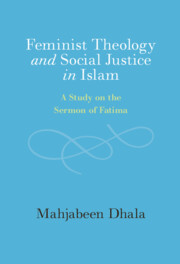Book contents
- Feminist Theology and Social Justice in Islam
- Feminist Theology and Social Justice in Islam
- Copyright page
- Dedication
- Contents
- Acknowledgments
- Introduction
- 1 Fatima in Islamic Sacred Sources
- 2 Fadak: More than a Land Dispute
- 3 Women’s Theology
- 4 Service-Based Leadership
- 5 Fatima Inspires Social Justice
- Conclusion
- Appendix The Sermon of Fatima
- Bibliography
- Index
- References
Bibliography
Published online by Cambridge University Press: 27 January 2024
- Feminist Theology and Social Justice in Islam
- Feminist Theology and Social Justice in Islam
- Copyright page
- Dedication
- Contents
- Acknowledgments
- Introduction
- 1 Fatima in Islamic Sacred Sources
- 2 Fadak: More than a Land Dispute
- 3 Women’s Theology
- 4 Service-Based Leadership
- 5 Fatima Inspires Social Justice
- Conclusion
- Appendix The Sermon of Fatima
- Bibliography
- Index
- References
Summary

- Type
- Chapter
- Information
- Feminist Theology and Social Justice in IslamA Study on the Sermon of Fatima, pp. 197 - 207Publisher: Cambridge University PressPrint publication year: 2024

